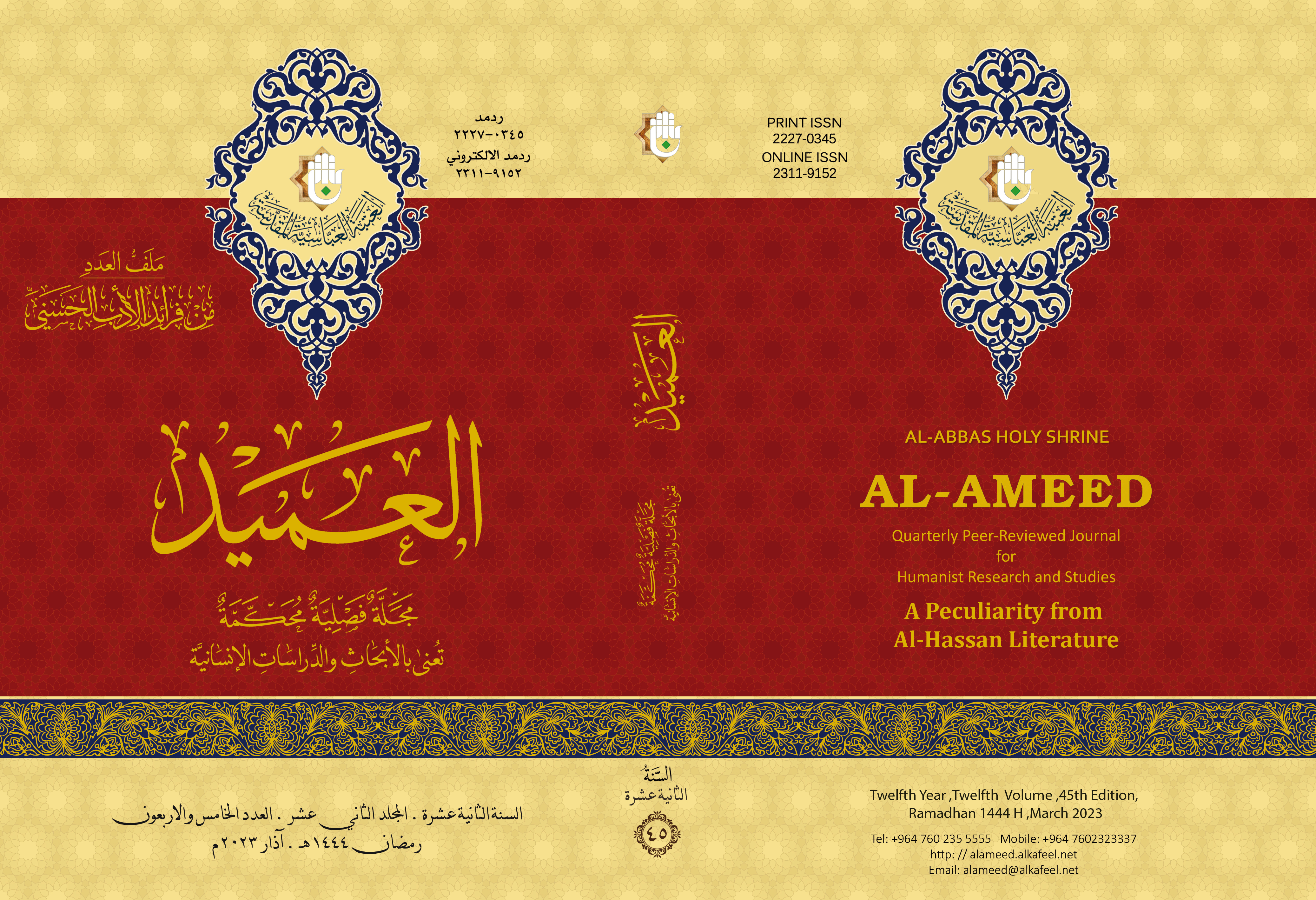أسلوبية الموجهات الحجاجية في خطب الإمام الحسن (عليه السلام)
DOI:
https://doi.org/10.55568/amd.v12i45.43-88الكلمات المفتاحية:
الموجهات الحجاجية، خطب الإمام الحسن (عليه السلام)، النصّ الحجاجي، تقنيات الخطاب، الحجاجالملخص
إنّ الهدف الرئيس من النصّ الحجاجي هو توجيه المتلقي للاقتناع بالفكرة المطروحة، بل لعله الهدف الوحيد الذي يقصده الخطيب عندما يطرح فكرة ما، ولذا تدرس تقنيات الخطاب التي من شأنها أن تؤدي بالأذهان إلى التسليم بما يعرض عليها من أطروحات، أو أن تزيد في درجة ذلك التسليم، فـاللغة حجاج محض، والحجاج توجيه صرف، والخطاب الحجاجي يتميز عن باقي الخطابات الأخرى بكونهِ خطاباً مبنياً، وموجَّهاً، وهادفاً، وقد كان للإمام الحسن(عليه السلام) دور مؤثر تجلّى من خلال دراسة اسلوبية الموجهات الحجاجية، فهو يهدف الى تجاوز الآلية اللغوية؛ ليبرز قيم العلامة اللغوية في ذاتها, تارة عبر المعنى المباشر، وأخرى من الإيحاء بالمعنى وعدم المباشرة، واقتناص لازم المعنى، والتأثير في متلقيه، وهذا الأمر تمّ له حين استعمل أدواته استعمالاً مناسباً مراعياً المقام الذي يفرض عليه أن يختار له الحرف الموحي، واللفظ المناسب المؤثر.
التنزيلات
منشور
إصدار
القسم
الرخصة
الحقوق الفكرية (c) 2022 (CC BY-NC)

هذا العمل مرخص بموجب Creative Commons Attribution-NonCommercial 4.0 International License.


